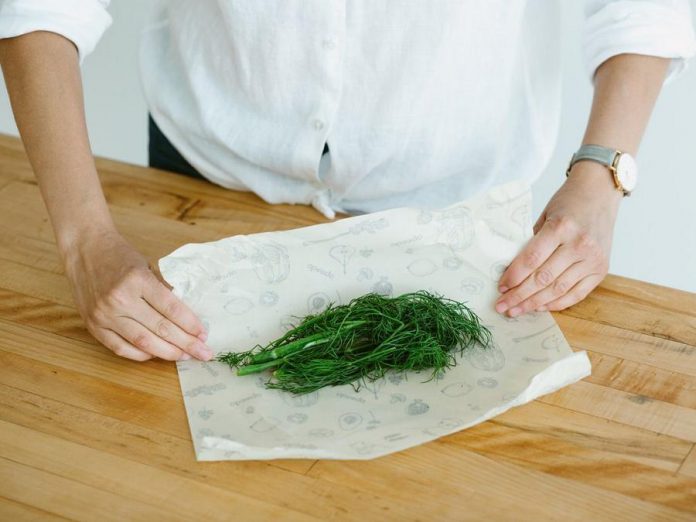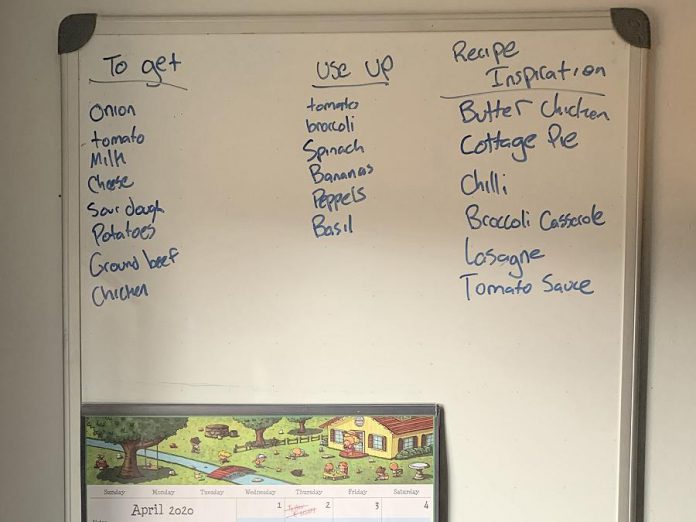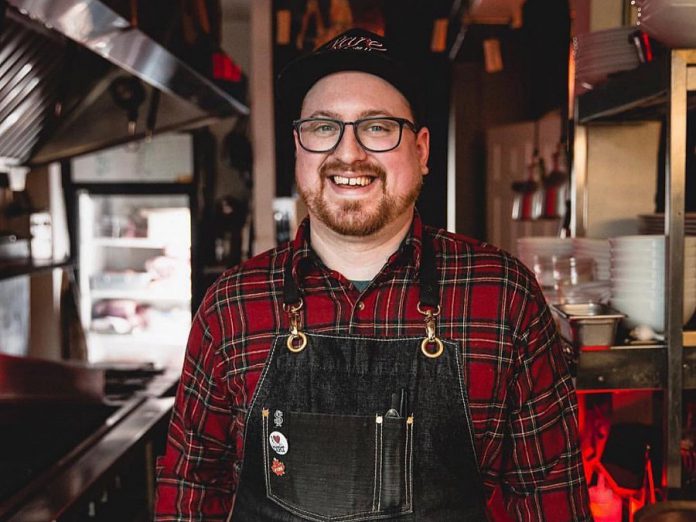
Every month, GreenUP features a zero waste tip or product and a giveaway contest. During the COVID-19 pandemic, we all need some help to make our food buying more efficient and less wasteful.
With that in mind, this month’s zero waste feature is all about tips, tricks, and resources to help you plan meals more effectively, reduce food waste, and shop less frequently.
On the GreenUP website, we are also running a giveaway contest to win a variety pack of Abeego Beeswax Food Wraps.
Leftovers first

In my household, leftovers are always at the front of the line. Keeping leftovers visible at the front of the shelf in your fridge helps remind you to use them before using anything else.
My rule is that all leftovers must be eaten within 48 hours.
One way that I stay within this timeline is by making leftovers the basis for breakfast or lunch the following day. For example, leftover mashed potatoes make an excellent breakfast hash alongside tofu scramble or eggs. Leftover roasted sweet potatoes and rice are great additions to black bean burritos.
Rice or noodles from last night’s supper can easily be given a second life, with just a little bit of innovation. Heat oil in a pan, add some onion, mushrooms, peppers and garlic and then toss in the carbs. This is an excellent way to use up what has already been cooked to create an easy and delicious meal.
Make your shopping list a living and shared document
One key to strategic and less frequent grocery shopping is developing a list over the course of several days, instead of only putting a list together just before you shop. Plan ahead so that you have two weeks’ worth of groceries.
Bea Johnson, author of Zero Waste Home, recommends keeping a physical copy of the list posted in your kitchen where everyone can see it and add to it. Maintaining a shared ongoing list allows you to look at it throughout the course of the day and the week, adding to it as you encounter needs.

I asked Tyler Scott, chef and co-owner of Rare in downtown Peterborough, about how his family prepares their grocery list at home.
“We have a white board in our kitchen that we add to when we are running low on something,” says Scott. “Before we shop, we always make sure to create a list from the notes on our board. We are old school and take pen to paper. I get produce, meat, grains, and dairy that I know my family will eat. We fill in pantry items and make sure we are fully stocked on the items that we use regularly.”
Smartphones can offer a paperless alternative to a physical list, and this may help if you are prone to forgetting your list when you go shopping. Keep in mind, though, that if the list is only on one phone that is not as suitable for shared participation.
Some apps allow for shared grocery lists, like Our Groceries, List Ease, and others.
I have not tried these myself, but I would appreciate your feedback if you use an app for grocery lists. Also, if you use your smartphone remember to keep it and your hands clean, especially during food handling and meal preparation.
Planning meals in advance and preparing a smart grocery list can help reduce the number of grocery deliveries you need or trips to the grocery store you make. Fewer trips to the grocery store helps us flatten the curve of COVID-19 and keep staff at grocery stores as safe as possible. Fewer trips by car also reduces your carbon footprint.
Follow your plan
Once you have a list prepared, follow it while you are shopping and also over the days after shopping. Be creative, but do not get distracted.
“Try new things, but don’t buy things you know you don’t like or don’t have time to learn how to prepare,” Scott suggests. “Don’t over buy things that will spoil quickly, and limit your use of prepared foods until after you’ve used your fresh ingredients.”
Commit to working with what you have at home. Be aware of the contents of your fridge and pantry and what needs to be used first to avoid food waste. Preventing food waste saves you money at the same time as saving the environment.
“During this time it is important for community members to think of ways to use what they might already have in their cupboards and fridges or freezers to limit the need to leave their homes for food,” says Erica Diamond, a registered dietitian with Peterborough Public Health. “Taking stock of what they already have will also help to reduce the likelihood of buying too much resulting in unnecessary purchases and food waste.”
If you have never planned meals in advance like this before, give yourself the time and space to observe what works and what does not work for you. It takes practice to develop effective household management strategies. What you learn will be valuable even after the crisis has passed.
Additional resources and tips
“Telehealth dietitians are available to answer community members questions regarding nutrition and health,” Diamond suggests. Call 1-866-797-0000 (press one for English, then press two to speak with a dietitian, 9 a.m. to 5 p.m. on weekdays.
Unlock Food (www.unlockfood.ca) is a website maintained by registered dietitians that provides a wealth of information on a variety of healthy eating topics including cooking with unique ingredients, meal planning for different health issues and individual needs, and even how to get the kids involved with kid-approved recipes.
“The Nourish Project with the YWCA has also been exploring how to best support participants through this time,” observes Diamond. “Cooped Up Cooking is being developed to help viewers learn to cook basic meals based on what might be in their pantries.” Check out www.nourishproject.ca for more information.
“Support our local farmers to help protect their livelihoods, and our local economy while also helping to preserve our natural environment during these uncertain times,” she adds. Information about local food (including food available from farmers and local restaurants that deliver with online payment options) is available on Facebook at facebook.com/localfoodptbo/.

I also asked Tyler Scott what core ingredients he finds useful to always have in the kitchen.
“Eggs, butter, flour, milk, baking soda, baking powder, salt, sugar, maple syrup, canola oil,” says Scott. “With these ingredients you should be able to make thousands of recipes.”
“Use resources at your fingertips to learn the basics like cookbooks and the internet. Try to use the whole ingredient and save your scraps for stocks or sauces for later use. When your vegetables are past their prime, it’s time to throw them into a braise or sauce.”
“Large-batch cooking one-pot meals is efficient because it gives you leftovers to freeze or share with your neighbours. Take advantage of pick-up at local restaurants and markets for hot meals or ready-made meals. This will support your local businesses and give you a break from cooking while still enjoying quality dinner.”
You can also visit homecooking.show for a podcast about how to cook from home during quarantine.
Last but not least, visit www.greenup.on.ca/greenup-store/ where you can now shop online for many of your favourite items in our store.


























